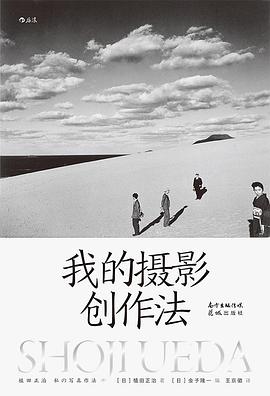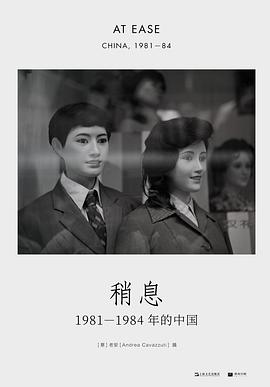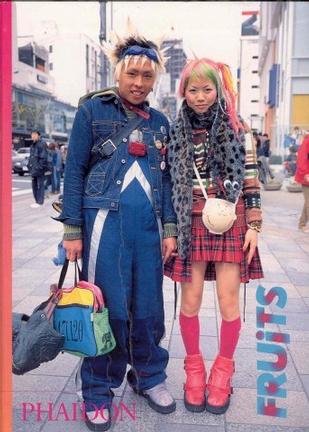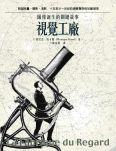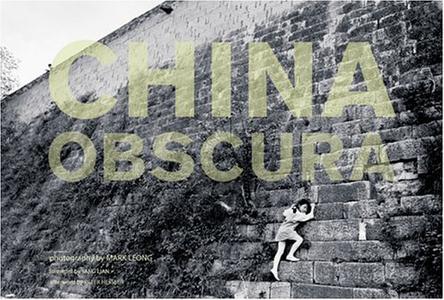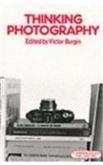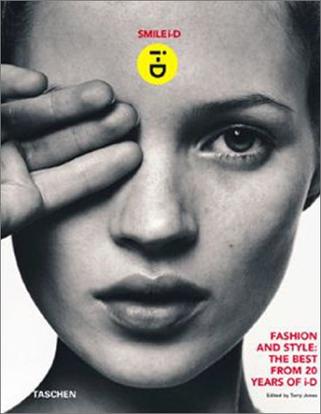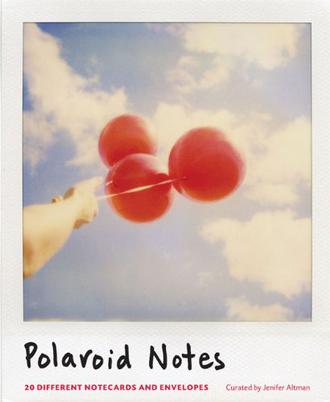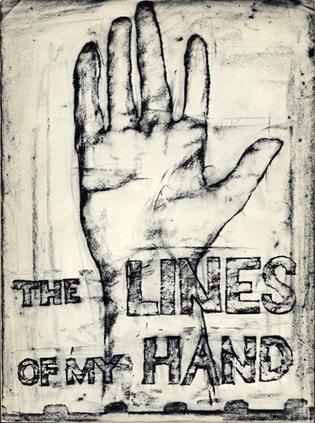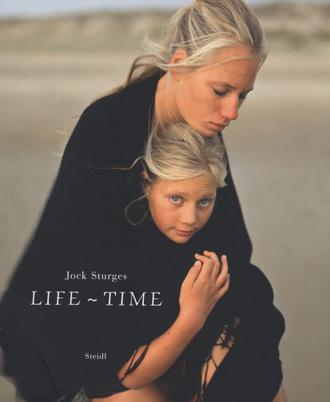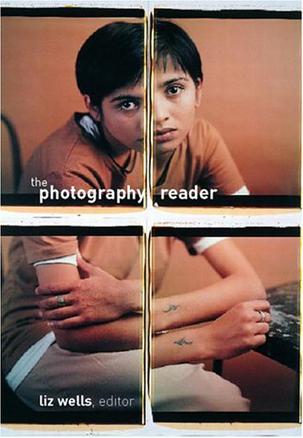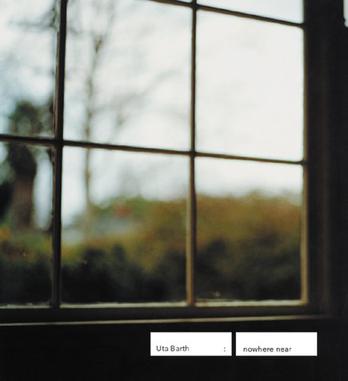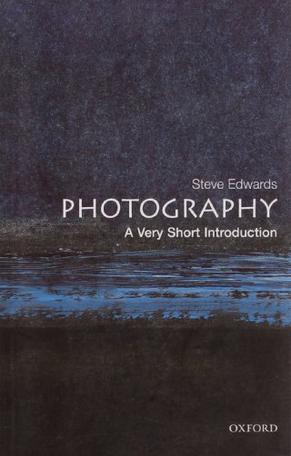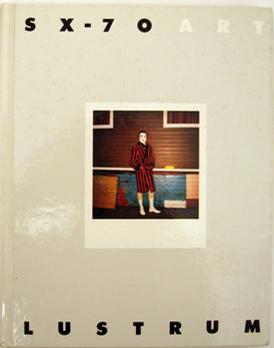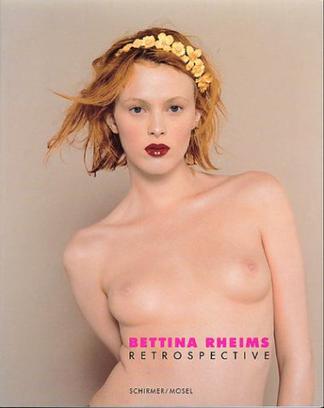标签:Photography
-
我的摄影创作法
20世纪日本代表摄影家
植田正治 文集
对摄影 持续、纯粹、热忱的思考
·
编辑推荐
◎自谦为业余摄影师的国宝级摄影家
植田正治从中学三年级开始热衷于摄影,二战前在日本崭露头角。战后以家乡鸟取的天空、地平线、沙丘为背景,将拍摄对象当作静物一般布置后摆拍。该手法被称为“植田调”,在世界 范围内获得了高度评价。植田正治的前卫艺术摄影对日本和世界摄影产 生了重要影响,而他本人始终自谦为一名业余摄影师。本书中他多次强调自己不靠摄影吃饭的爱好者身份,从中可见他对摄影的纯粹态度 。
◎感受植田正治“拍摄的快乐”
与很多摄影师一样,植田正治喜欢研究相机、镜头、相纸、相机包,关注流行的题材、构图、装裱、冲印方式。他对经手的各种器材和拍摄手法的详尽讲解,可以让人完整地感受到他作为摄影师的快乐。植田正治在热情尝试新技术、新潮流的同时,也常常反思它们与摄影本质的关系,呼吁同行们不要忘记当初对摄影产生的那份热情。
◎只为自己而拍,用拍照表达自我
植田正治独树一帜的摄影风格,曾显得格格不入。在书中,植田回忆二战期间,报纸上号召摄影师也应该站起来,他担心自己再也不能自由地拍摄;1950年代,以土门拳为中心的现实主义风格盛行,植田的摆拍手法与其推崇的“绝对快照”背道而驰。植田用平和诚恳的文字,展现了在时代潮流滚滚向前的时候,他如何坚持在自己相信的道路上,只拍能够表达内心的照片。
·
内容简介
20世纪70至80年代,植田正治在日本的摄影杂志上发表了许多文章,讲述了他开始摄影创作的契机、自谦为“摄影爱好者”的原因、对当时流行的摄影风格的批评、自己偏好的拍摄手法和摄影器材等等。为了再现植田正治通过“语言”这一不同于摄影的行为构建的世界,考虑到他的叙述口吻的统一性、内容的重复性等,本书对这些文章进行了重构。
-
稍息
意大利摄影家老安在华40年首部摄影集。
190张照片,记录在改革开放之初的“稍息年代”,
普通中国人如何小心翼翼走向真正意义上的生活。
在这些照片中,我们将目击自己的记忆,也将看见我们的遗忘,
并重新发现有待省察的生活。
陈丹青、余华、刘小东、顾铮、彭磊、李静、冯梦波等推荐
————
本书收录了意大利摄影家老安(Andrea Cavazzuti)1981到1984年在中国拍摄的190余帧照片,记录下了那个“稍息年代”里中国人的一些日常生活场景。
照片里的中国,刚刚走出动荡不安的岁月,尚未来得及拥抱传真手机网络等工具。那是一段罕见的、短暂的沉静时刻,人们在喘一口气,准备跃入即将来临的狂热。
老安的摄影,聚焦于普通中国人的日常生活。在端正的构图里,在有限的画幅中,捕捉无穷无尽的细节。它们无意于报道与解释,却留存下一个时代的气氛。我们将在这些照片中目击自己的记忆,也将看见我们的遗忘,并重新发现有待省察的生活。
本书还收录了陈丹青、刘小东、顾铮的评论文章,老安与奥利沃·巴尔别里、彭磊、冯梦波的对谈,以及老安用中文撰写的风趣幽默的散文作品:《气呼呼的小词典》。
————
这些照片极其珍贵,它们干净,有内涵。既不首肯,又不否认,而是设身处地。
——奥利沃·巴尔别里 [摄影家]
你有过瞢忪发呆的时刻吗——忽然忆及很久前的一幕,陷入深深的、长久的发呆,没有思绪,不带情感,只是呆呆“看见”了自己的记忆——这时刻,就是老安的摄影。太动人了。他成功地使观看者忽略,以至不发觉他的照片如何动人,就像照片中的人没发觉他。
——陈丹青 [画家,作家]
老安的照片,对于我们这一代中国人是弥足珍贵的记忆。在这一张张或安静或活跃的黑白照片里,我们看到过去的自己如何挣脱束缚,小心翼翼走向真正意义上的生活。
——余华 [作家]
老安从来不骚扰他眼前景观,从来不把镜头推得更近,从不把自己的欲望表现在前。老安总是保持和物象间礼貌的距离,摈弃滥情、摈弃抱怨、摈弃明辨是非,像个过来人,不愤怒、不嘲讽……
——刘小东 [画家]
老安用照相机插入现实的瞬间,可能是一个相当暧昧的瞬间,是一个并不说明什么的瞬间,但就是这个瞬间,可能抽出、保留了某个时代的某个时刻的气氛,观者可以据此确认时代。
——顾铮 [摄影评论家]
老安的摄影,宛如契诃夫式的戏剧:散漫,无中心,在一个意义稀薄的日常空间里,重要性大致相当的主人公们微弱地行动着,无所事事,波澜不惊,却在剧终,一切富有韵律、貌似熟悉的细节蓦地发生核聚变,轰然达成一个诗意而陌生的象征。
——李静 [作家]
看老安的照片,给我那种小时候在中国到处转悠的感觉,每个地方完全都不一样……这么素、这么平淡的照片,现在看起来反倒有些不一样的感觉,比较时髦的感觉。
——彭磊 [导演,音乐人]
老安的照片几乎没有碰出来的东西,里面都有看头。
——冯梦波 [艺术家]
-
Fruits
Fruits is a collection of Tokyo street fashion portraits from Japan's premier street fanzine of the same name. 'Fruits' was established in 1994, by photographer Shoichi Aoki, initially as a project to document the growing explosion in street fashion within the suburbs of Tokyo. Over the last five years, the magazine has grown to cult status and is now avidly followed by thousands of Japanese teenagers who also use the magazine as an opportunity to check out the latest styles and trends. The average age of the kids featured in the magazine is between 12 and 18, and the clothes that they wear are a mixture of high fashion - Vivienne Westwood is a keen favourite - and home-made ensembles which when combined create a novel, if not hysterical, effect. This extensive collection of portraits represents a unique documentation of the changing face of street fashion throughout the last decade. Colourful, fascinating and funny, this is the first time these cult images have been published outside Japan. -
Zwei Schauferle mit Klob und eine Kinderportion Schnitzel mit Pommes Frites
The Teller family business produces small parts for string instruments. Juergen Teller has taken photographs of company employees, his uncle and his uncle's collection of hunting trophies. He has also shot pictures in dripstone caves, of Kate Moss during her pregnancy and of himself. In the world of Juergen Teller, it somehow all fits together. Werkstatt--a studio or creative environment--collects, as Juergen Teller does, people and places. It combines scenes from the world he grew up in with selections from the world of beautiful images that he travels in today. Candid, subjective and completely without superficial affect, Teller offers a peek or two into his world. How it all fits together is left up to the viewer. -
Smile i-D
The year 2000 marks issue 200 and year 20 for i-D magazine. What better way to celebrate than make a book? As founder and editor-in-chief Terry Jones writes, "A cross between a menu and a diary, Smile i-D maps the magazine's journey beyond the veneer of regular fashion." Now that most of us consider i-D a household name, it's interesting to be reminded that 20 years ago, street fashion was a nascent concept. Finding music and street culture more interesting than the traditional fashion world, Terry Jones abandoned his post as Art Director at British Vogue in 1977 to embark on a journey that has revolutionized not only the world of fashion magazines, but arguably fashion itself. Blending fashion and social documentation, early issues of i-D (major collector items now) were 40 pages stapled together which sold for 50p. Journalistic in spirit and revolutionary in form, the magazine sought to show the world the gritty, real side of fashion as seen in the streets of London- kilts, mohawks, safety pins and all. When newsagents hesitated to sell i-D because of finger injuries resulting from the staples, early supporters helped by selling issues from the trunk of a Cadillac. Lots of teamwork and innovation brought i-D to the forefront of contemporary fashion culture and today it can be found at newsstands practically everywhere on the globe (minus the staples). Smile i-D incorporates a single spread from each issue of the magazine thus far. Watch out for the stars who appeared here before the rest of the world even knew who they were. And don't forget to check out the Madonna cover from issue 14: why is the mole on the wrong side of her face? You'll have to read the book to find out. -
Sibylle Bergemann: Polaroids
German photographer Sibylle Bergemann (1941-2010) made her living in fashion photography, but it was with her portraits of everyday life in East Germany over the 45 years of its existence that she gained acclaim. Nonetheless, she managed to make even her fashion photography subversive by East German terms, creating brilliant flares of color against uniform gray backdrops. "It's the fringes of the world that interest me," she famously declared, "not its center. The non-interchangeable is my concern. When there is something in faces or landscapes that doesn't quite fit." Well suited to such concerns, Polaroids have always occupied a place of affection within Bergemann's oeuvre; in these pictures, the artist captured more ephemeral moments and images than is typical of the rest of her oeuvre. Collected here for the first time, they record a vision without comparison in European photography. -
Polaroid Notes
Add an extra expressive quality to your letters by writing them on these picture-profuse notecards. Including 20 different cards of poignant Polaroid-effect prints, from a little girl in oversized rain boots to a yummy looking cupcake on a dish, along with envelopes, this adorable stationary set is sure to make your letters extra meaningful! -
「APARTMENT」(写真集)
石内都(いしうち・みやこ) 1947年、群馬県生まれ。多摩美術大学中退。1979年、第4回木村伊兵衛写真賞受賞。1999年、第11回写真の会賞、第15回東川町国際写真フェスティバル国内作家賞受賞。2003年、第15回写真の会賞受賞。国内外で個展、グループ展多数。2005年にはヴェネチア・ビエンナーレ日本館にて「Mother's」を単独出品。写真集に『APARTMENT』(写真通信社、1978)、『絶唱・横須賀ストーリー』(写真通信社、1979)、『連夜の街』(朝日ソノラマ、1981)、『1・9・4・7』(IPC、1990)、『YOKOSUKA AGAIN』(蒼穹舎、1998)、『Endless Night 2001――連夜の街』(ワイズ出版、2001)、『Mother's』(蒼穹舎、2002)、『scars』(蒼穹舎、2002)ほかがある。 -
Life Time
Callout: My hope is that my work is in some way counter-pinup. A pinup asks you to suspend interest in who the person is and occupy yourself entirely with looking at the body, fantasizing about what you could do with that body, completely ignoring how the person might feel about it. People who make pinup photographs don't care who the woman is, what tragedies or triumphs that person's life might encompass. My work hopefully works exactly counter to that. My ambition is that you look at the pictures and realize what complex, fascinating, interesting people every single one of my subjects is. --Jock Sturges, the Boston Phoenix Long known for his radiant black-and-white naturist portraiture, Jock Sturges has also been quietly working in color for more than two decades. Life Time presents a broad range of this color work for the first time and carries forward Sturges' extended portraits of families in Northern California counter-culture communities and on French naturist beaches. Working with the same models and their families in his long-term studies of growth, change and relationship, his large format images borrow significantly from classical periods in both photography and nineteenth and early twentieth century painting. The large color plates in Life Time represent almost perfect one to one translations of the original transparencies and are rich with detail and physical and psychological nuance. Sturges describes his work as "identity driven" because his portraits represent collaborations that stretch over entire lifetimes. The confident ease with which all of his subjects present themselves to his camera evidences a rare level of trust and friendship. -
The Photography Reader
The Photography Reader is a comprehensive introduction to theories of photography; its production; and its uses and effects. Including articles by photographers from Edward Weston to Jo Spence, as well as key thinkers like Roland Barthes, Victor Burgin and Susan Sontag, the essays trace the development of ideas about photography. Each themed section features an editor's introduction setting ideas and debates in their historical and theoretical context. Sections include: Reflections on Photography; Photographic Seeing; Coding and Rhetoric; Photography and the Postmodern; Photo-digital; Documentary and Photojournalism; The Photographic Gaze; Image and Identity; Institutions and Contexts. -
Photography
Photographs are an integral part of our daily lives from sensationalist images in tabloid papers and snapshots, to art photography displayed in galleries and sold through international art markets. In this thought-provoking exploration of the subject, Edwards combines a sense of the historical development of photography with an analysis of its purpose and meaning within a wider cultural context. He interrogates the way we look and think about photographs, and considers such issues as truth and recording, objectivity and fine art, identity and memory. -
Lachapelle Heaven to Hell (Photo Books)
The third installment of LaChapelle's trilogy LaChapelle Heaven to Hell is the long-awaited third volume in an exhilarating trilogy that began with LaChapelle Land (1996) and continued with the infamous Hotel LaChapelle (1999). Packed with astonishing, color-saturated, and provocative images, those titles both became instant collector's items and have since gone through multiple printings. Featuring almost twice as many images as its predecessors, LaChapelle Heaven to Hell is an explosive compilation of new work by the visionary photographer. Since the publication of Hotel LaChapelle, the strength of LaChapelle's work lies in its ability to focus the lens of celebrity and fashion toward more pressing issues of societal concern. LaChapelle's images—of the most famous faces on the planet, and marginalized figures like transsexual Amanda Lepore or the cast of his critically acclaimed social documentary Rize—call into question our relationship with gender, glamour, and status. Using his trademark baroque excess, LaChapelle inverts the consumption he appears to celebrate, pointing instead to apocalyptic consequences for humanity itself. While referencing and acknowledging diverse sources such as Renaissance, art history, cinema, The Bible, pornography, and the new globalized pop culture, LaChapelle has fashioned a deeply personal and epoch-defining visual language that holds up a mirror to our times. -
SX-70 Art
该书出版于1979年,收录了80幅全彩的宝丽来SX-70作品,主要由欧洲及美国摄影师拍摄,如著名的Helmut Newton, Andy Warhol, Lucas Samaras等。 该书有英语、德语、法语三个版本。 此处上传的是德语版封面。
热门标签
下载排行榜
- 1 梦的解析:最佳译本
- 2 李鸿章全传
- 3 淡定的智慧
- 4 心理操控术
- 5 哈佛口才课
- 6 俗世奇人
- 7 日瓦戈医生
- 8 笑死你的逻辑学
- 9 历史老师没教过的历史
- 10 1分钟和陌生人成为朋友

